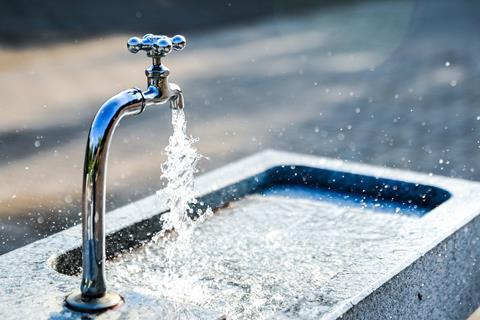Researchers from Lund University and the local water company investigating what would happen if chlorine was omitted from drinking water have found that a harmless predatory bacteria grew in numbers and devoured most of the other bacteria.

The study suggests that chlorine is not always needed if the filtration is efficient - and that predatory bacteria could perhaps be used to purify water in the future.
Just as human intestines contain a rich bacterial flora, many types of bacteria thrive in our drinking water and the pipes that transport them. On the inside of pipe walls is a thin, slippery coating, called a biofilm, which protects and supports bacteria. These bacteria have adapted to life in the presence of chlorine, which otherwise has the primary task to kill bacteria, particularity bacteria that can make humans sick.
Health impacts from chlorine
An ordinary glass of drinking water contains a lot of harmless bacteria. Chlorine, however, which in the studied piping system was added in the form of monochloramine, is not wholly unproblematic.
“Chlorine is an effective way to minimize growth of bacteria, but there is a risk of potential health impacts from byproducts that form with the chlorine. Chlorine has been linked to cancer and foetal damage and studying whether chlorine could be replaced by other methods is therefore relevant,” says Catherine Paul, associate professor in Water Resources Engineering and Applied Microbiology at Lund University.
She has spent many years studying the microflora of drinking water and biofilm and various processes used to produce drinking water.
Bacterial flora
Together with doctoral student Tage Rosenqvist and other researchers at Applied Microbiology, Vatten och miljö i väst AB (Vivab), Sweden Water Research AB and the Swedish Defence Research Agency, Catherine recently published a study in the journal npj Clean Water. The article is based on several years of monitoring the bacterial flora in drinking water and pipes in Varberg, Sweden.
“The collaboration we have had between academia, industry and government organisations is very special. We have different types of key expertise and the fact that the study was conducted in a real system makes the results applicable to practioners than if we had only carried out lab studies,” explains Catherine Paul.
Our drinking water is currently purified in several stages. Depending on the type of water, companies use various kinds of filters, and UV light but the last stage is almost always the addition of chlorine.
Switch to ultrafiltration
In Varberg, chlorine was removed in 2020 following the installation of a ultrafiltration, a filter that uses an extremely fine-meshed sieve to prevent harmful microorganisms slipping through from lakes and groundwater. With very few bacteria entering the drinking water, chlorine was deemed to be superfluous, even though it was not known what the consequences would be for the bacterial flora.
The researchers took water samples for analysis over a period of 6 months, from different points in the network at several times before the chlorine was discontinued and afterwards. In the lab, the DNA sequences naming all the bacteria in the water were identified through filtration and compared with databases to complete the microbiome puzzle. One year later, the researchers went back and took new samples to determine what the final microbiome was like.
“It’s as if a new restaurant had moved in. Chloramine kills certain bacteria, but we could see it was feeding other bacteria. During the period we could see how the bacterial buffet changed.”
Changing microflora
When the chlorine disappeared, certain types of bacteria starved while others grew and thrived. The biggest surprise for the researchers came in the third chlorine-free month when it was observed that certain bacteria had drastically decreased in number. And one special type of bacteria had increased: namely the predatory bacteria Bdellovibrio.
“We have not seen this exact type of bacteria in previous studies of this drinking water network. It has probably been lying concealed in the biofilm but was now given an opportunity. It’s totally harmless for us humans,” says Catherine Paul.
The assessment that chlorine became superfluous when the ultrafilter was introduced therefore proved to be correct.
Drinking water bacteria
The primary interest however, was not to investigate the results of the ultrafilter, which is quite an expensive solution. The aim was rather to get a better understanding of the concealed microflora in the drinking water pipes. Ultimately, could it perhaps be possible to add a mix of bacteria instead of chlorine?
“More studies are required in order to better understand how nature works within urban and built environments. I would really like to know how all the drinking water bacteria affect us. They are not harmful, but could they even good for us?”
“Our conclusion is thus that it is possible to have safe and clean drinking water without chlorine. We observed no increased risk, which of course was very important for the water company and their customers.”
Other approaches
In addition to the type of ultrafiltration used in Varberg, there are other ways to purify water without chlorine, such as UV light or biofilters.
“Each method has its advantages and disadvantages. UV light is an effective method, but one disadvantage is that the lamps use a lot of energy. Biofilters often don’t require any energy at all but take up a considerable amount of space. Ultrafilters are expensive. Many drinking water treatment plants in Sweden purify water using a combination of methods. However, our study shows that chlorine is not essential if you have other strategies to deal with, and monitor, bacteria,” concludes Catherine Paul.







No comments yet